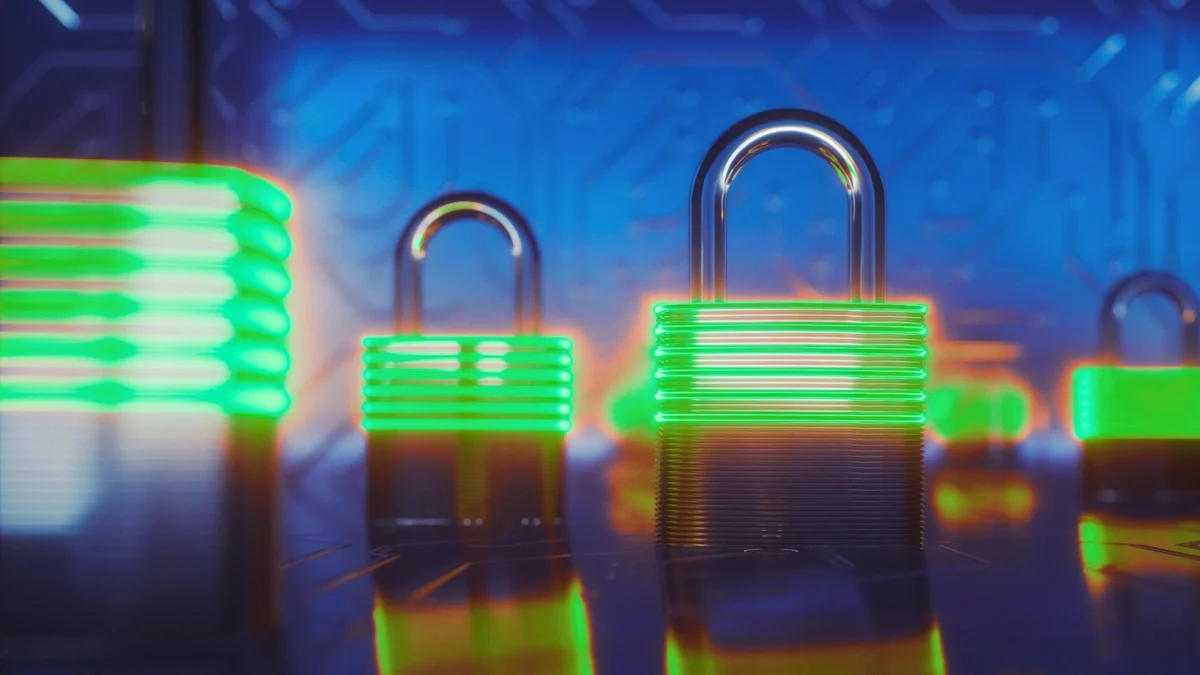Article Highlights
- Traditional cybersecurity awareness training is insufficient to protect organizations against modern, sophisticated threats.
- Building a resilient workforce requires shifting focus from check-the-box compliance to active behavioral change and culture.
- Organizations must empower employees to act as a human firewall by fostering an environment of continuous vigilance and support.
- Real-world simulations and proactive risk management are essential for maintaining a state of constant cyber readiness.
October is Cybersecurity Awareness Month, an ideal time for organizations to take a step back and evaluate their security posture. This year’s theme, "Secure Our World," reminds us that cybersecurity doesn’t stop at one-time training sessions. Instead, it’s about equipping your workforce to handle real-world threats with confidence.

To protect your organization and achieve your business goals, your workforce needs practical skills, repeatable playbooks, and confidence under pressure. That requires assessing existing skills and gaps, hands-on training, role-based practice, and leadership alignment so security supports operations rather than slowing them down. The path to resilience is clear: practice what you plan to do in the real world, then measure and improve. With the right training strategy, security becomes a growth lever, not a roadblock to business goals.
As cyberattacks become increasingly sophisticated, investing in comprehensive training is no longer optional, it’s essential. By embedding security into your organization’s culture and empowering employees through hands-on, practical training, you can create a truly cyber-resilient workforce.
Here’s a fact that might surprise you: human error is behind over 70% of data breaches. It’s a stark reminder that technology alone can’t protect your organization. The key is turning your employees into your strongest line of defense. In this blog, we’ll explore how to achieve that by adopting the foundational behaviors promoted by the Cybersecurity and Infrastructure Security Agency (CISA) and leveraging effective, ongoing education.
The Four Pillars of a Secure Workforce
CISA’s framework for Cybersecurity Awareness Month introduces four actionable behaviors that can significantly reduce an organization’s overall risk. These aren’t just theoretical concepts, they’re practical steps you can implement today to build a strong security foundation.
1. Strong Passwords: Small Habits, Big Impact
Let’s face it: weak or reused passwords are still a top way attackers enter critical systems and access sensitive information.
The fix is simple but powerful: use long passphrases, unique credentials for each system, and a vetted password manager. Pair that with account lockout policies and just-in-time access to minimize exposure. If users understand why length beats complexity, they adopt passphrases without pushback. For additional user-friendly guidance, share CISA guidance in your onboarding and refresher training.
What you can do:
Set policies that require employees to create strong, unique passwords for all business applications. To make this easier, encourage everyone to use a trusted password manager, which can generate and store secure passwords while minimizing errors.
Need help? Check out Introduction to Cybersecurity from Learning Tree for practical tips on building better password habits.
2. Multifactor Authentication (MFA): Secure Without the Friction
Think of MFA as the deadbolt on your front door, it’s that extra layer of security that makes all the difference. Even if a password is compromised, MFA ensures that an attacker can’t gain access without a second form of verification. Despite its effectiveness, some organizations hesitate to adopt MFA due to myths about complexity or inconvenience. In reality, it’s a small step that delivers major security benefits.
What you can do:
Pilot MFA with a small group, gather feedback, and roll out with clear instructions, short videos, and help-desk scripts. That approach improves end-user adoption while keeping support tickets to a minimum. The result is a measurable drop in risk without slowing the business down.
After the pilot, make MFA mandatory across all systems, especially for high-risk users and critical applications like email and VPNs. Start with high-priority areas and work toward organization-wide adoption. For deeper insights into implementing MFA and other access controls, consider ISACA's CISA Training course.
3. Phishing Reporting: Make It a Reflex
Phishing attacks are getting smarter, and they remain one of the biggest risks to any organization. The best way to combat them? Teach employees how to recognize and report suspicious emails or activity. When employees feel empowered to report phishing attempts, they become an active part of your organization’s defense.
What you can do:
Set up clear processes for reporting phishing attempts, such as a dedicated email address or a “Report Phishing” button in your email platform. Just as importantly, foster a culture where employees feel supported when reporting potential threats. Regular phishing simulations and targeted training can also help sharpen their awareness. To strengthen these skills, explore ISACA's CRISC Certification Training, which focuses on managing IT risks effectively.
Attackers rely on urgency and emotion to trigger mistakes. Train people to pause, inspect, and report. Use short simulations to build pattern recognition: mismatched domains, unusual requests, and email styles that “feel off.” Then measure how quickly teams report, not just who clicks. Reinforce best practices with practical resources on phishing and social engineering techniques, and align your SOC playbooks to accelerate triage and response. For teams who handle escalations, consider role-based upskilling like cybersecurity operations fundamentals.
4. Software Updates: Close the Door on Known Vulnerabilities
Unpatched software is like an open window for cybercriminals. Attackers are constantly on the lookout for outdated systems they can exploit. Keeping your systems, applications, and devices updated is a simple yet critical step in reducing vulnerabilities.
Patch management is how you seal the cracks that attackers count on. Establish a clear cadence, define maintenance windows, and test updates in a staging environment before production. Don’t overlook configurations that harden your environment, like strengthening transport layer security (TLS) and enforcing secure defaults. When teams understand how updates prevent real exploits, adoption improves and downtime drops. Over time, you move from reactive patching to proactive lifecycle management.
What you can do:
Automate patch management wherever possible to ensure updates are applied promptly. When automation isn’t an option, establish a strict schedule for manual updates and checks. Don’t forget to include all connected devices, such as mobile phones and IoT hardware, in your patching strategy.
Turn Awareness into Habits with Hands-On Training
Teaching employees about cybersecurity goes beyond handing out guidelines. The best way to create lasting change is through hands-on, scenario-based training that mirrors real-world challenges. Passive or generic programs won’t cut it. Employees need to practice responding to actual threats so they can develop the skills and confidence to act effectively.
Information alone does not change behavior, practice does. Build a training plan that matches roles: SOC analysts train on incident response, developers get secure coding and supply chain controls, and managers practice decision-making during tabletop exercises.
Codify your security protocols so every team knows what good looks like, then reinforce with labs and realistic scenarios. Measure progress with phishing report rates, MFA enrollment, patch compliance, and mean time to respond, and feed those metrics into your next training cycle. When teams learn by doing, resilience becomes part of the culture.
That’s where Learning Tree’s Cybershield solution comes in. It offers a highly interactive learning environment where employees can tackle advanced phishing scenarios, respond to live security incidents. Build true cyber resilience on an organizational level. By focusing on practical exercises that align with modern security frameworks, Cybershield helps your team internalize best practices and turn them into everyday habits.
For those looking to further their expertise, advanced certification courses like CCSP Training and CRISC Certification Training are excellent ways to deepen cybersecurity knowledge and leadership capabilities.
Where AI and Cybersecurity Meet
AI now touches every function—from ticket triage to code generation—so security and AI enablement must advance together. Start with the fundamentals of artificial intelligence, then plan targeted ai training for your workforce.
Security teams can leverage machine learning to detect anomalies and reduce alert fatigue, while governance teams define acceptable use, data handling, and model oversight. For rollout guidance, explore practical ai implementation strategies and program-level ai adoption that align to risk and compliance. Public-sector leaders can tap tailored resources for government ai adoption to ensure mission outcomes and security controls move in lockstep.
A Simple Roadmap for Successful Implementation
- Assess: Run a formal security risk assessment to prioritize the biggest wins. Align your controls to the NIST Cybersecurity Framework and document gaps.
- Enable: Deliver role-based labs that turn policy into practice. Focus on MFA, phishing response, patch automation, and secure build pipelines.
- Adopt: Apply change management to improve user adoption, using pilots, just-in-time training, and clear communications.
- Scale: Build workforce readiness across teams with repeatable playbooks, scorecards, and continuous improvement.
Cyber resilience is built, not bought. With hands-on training, clear standards, and steady measurement, your organization can reduce risk while supporting growth
Cybersecurity Awareness Month is the perfect time to kickstart lasting change in your organization. By combining CISA-aligned training programs with a focus on hands-on learning, you can embed a culture of security and prepare your team to handle evolving threats.
Ready to get started? Learning Tree offers a wide range of cybersecurity training solutions, from foundational skills to advanced. Empower your workforce to be your strongest defense and set a new standard for cybersecurity excellence.
Here’s an optimized FAQ section tailored for a blog about "Building a Cyber-Resilient Workforce":
Frequently Asked Questions (FAQ)
1. What is the importance of hands-on cybersecurity training?
Hands-on cybersecurity training equips employees with practical skills to handle real-world threats. Unlike passive learning, scenario-based training builds confidence and turns knowledge into actionable habits, reducing risks like phishing and human error.
2. How can organizations reduce cybersecurity risks caused by human error?
Human error accounts for over 70% of data breaches. Organizations can mitigate this by implementing CISA’s four pillars: strong passwords, multifactor authentication (MFA), phishing awareness, and regular software updates, paired with ongoing, role-based training.
3. What are the benefits of adopting multifactor authentication (MFA)?
MFA adds an extra layer of security by requiring a second form of verification, even if passwords are compromised. It’s a simple yet effective way to protect critical systems and reduce unauthorized access risks.
4. How does AI enhance cybersecurity in the workplace?
AI improves cybersecurity by detecting anomalies, reducing alert fatigue, and automating threat responses. Training teams on AI fundamentals ensures secure adoption and alignment with compliance and governance standards.
Related Learning Tree Resources
- Introduction to Cybersecurity Training
- ISACA Certification Training Courses
- ISC2™ Certification Training Courses
- CyberSAFE: Minimizing Your Digital Risk (Webinar)
- CyberShield Workforce Enterprise Solution
- Cybersecurity Foundations Professional Certificate Program
- Cyber Security Training Courses (Directory)


